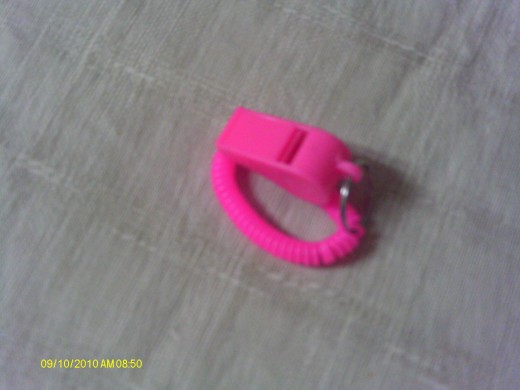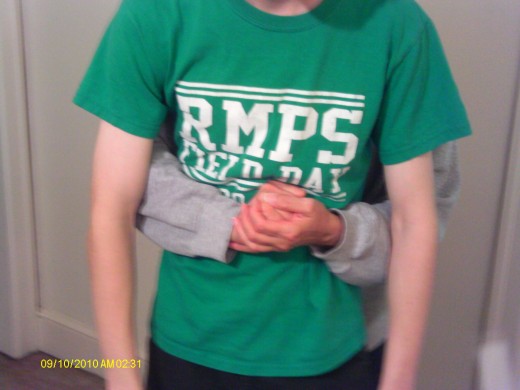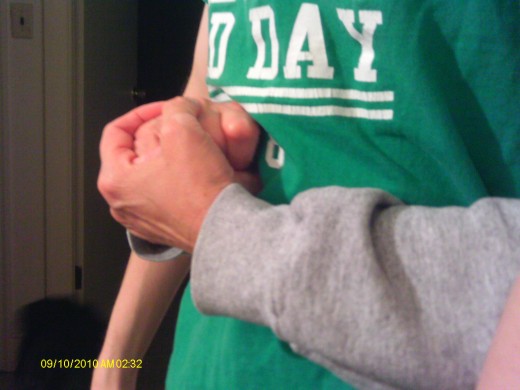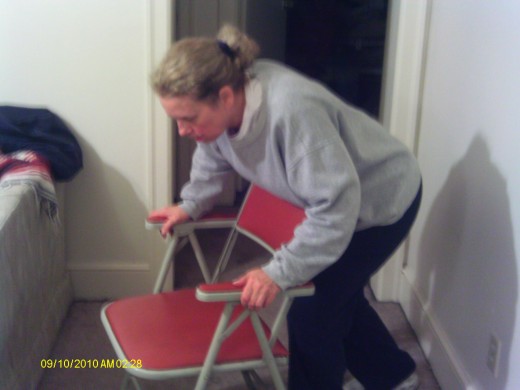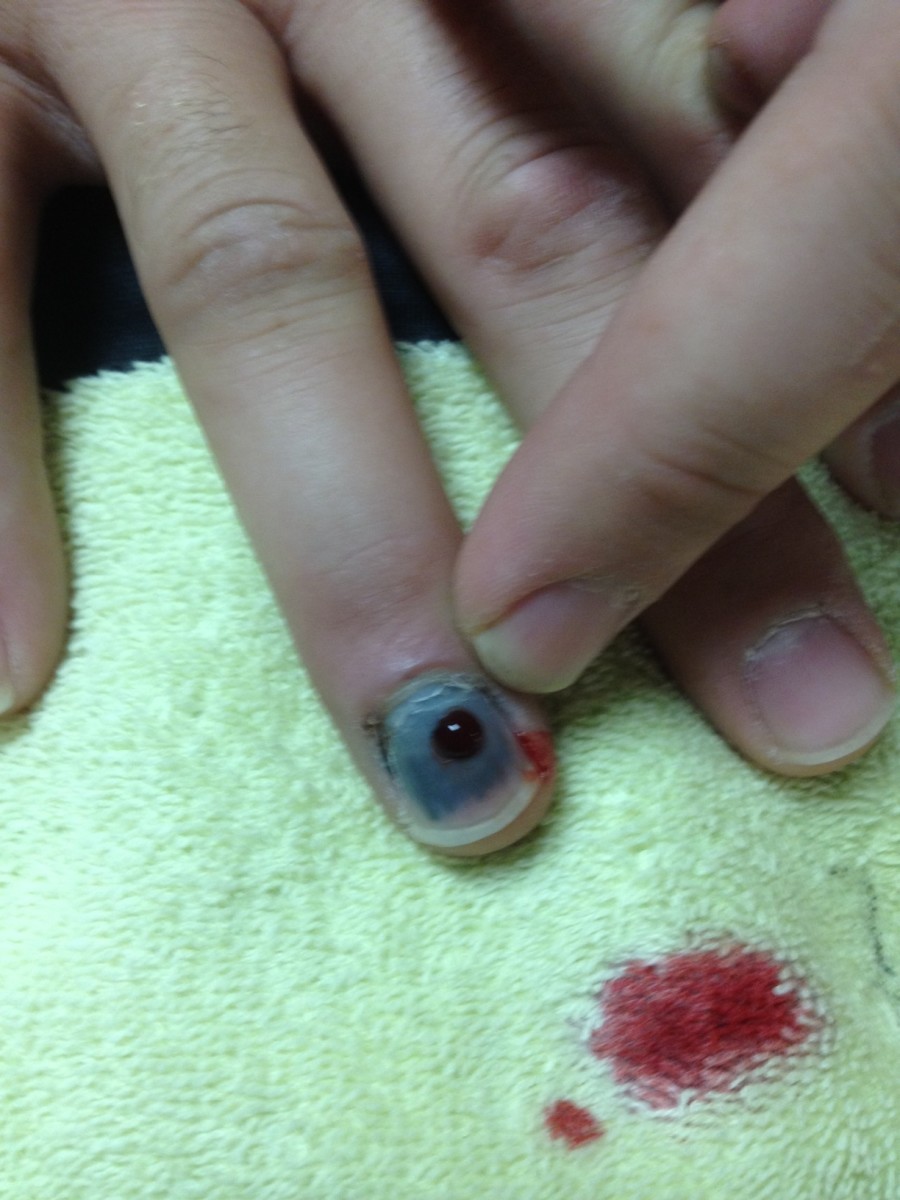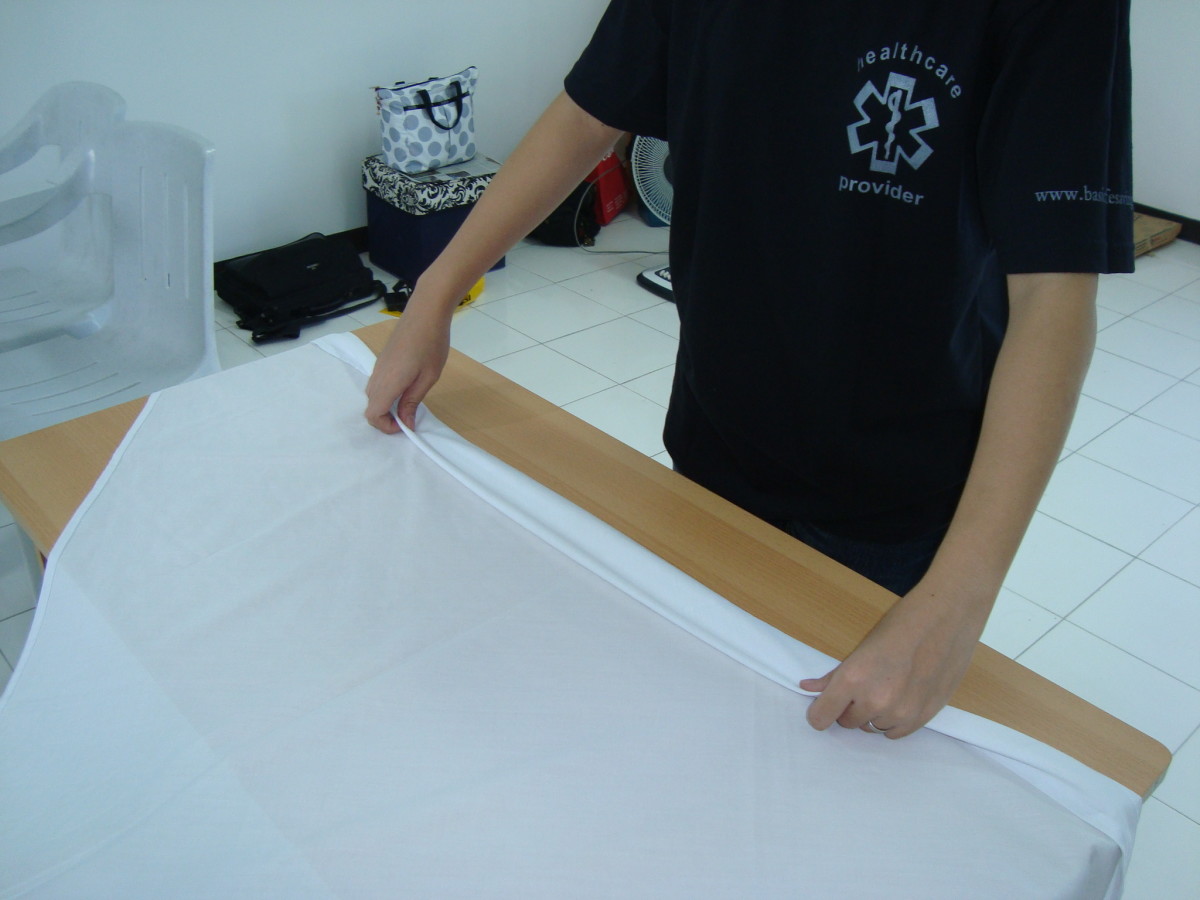Heimlich Maneuver: First Aid Rescue for a Choking Victim
Common choking objects
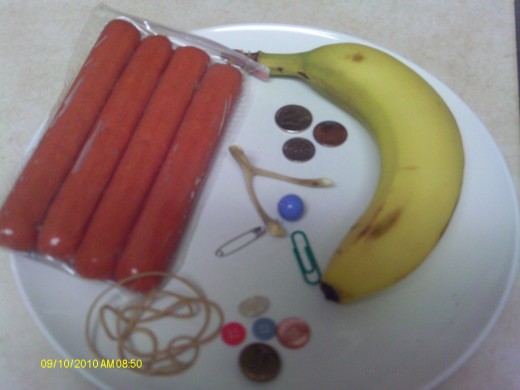
Anyone can be a choking victim
A choking victim is a person whose airway has been obstructed by a foreign object, such as: a button, marble, safety pin, bottle cap, coin, hot dog, banana, chicken, or fish bone, making it impossible to breathe. In a matter of seconds a conscious individual can pass out and, without rescue intervention, could die. I know, because I was a choking victim.
Signs of Choking
1. Cannot speak, cry out or verbally communicate
2. Breathing is difficult, may sound wheezy or whistling sounds, or gasping
3. Possible gurgling or gagging noise
4. Uses the universal choking sign: clutches her own throat
5. Skin begins to turn blue for lack of oxygen-starts at the mouth and facial area
6. Unconsciousness
Famous people who have choked:
1. U.S. President George W. Bush-choked on a pretzel in 2002
2. The Queen Mother-choked on a fish bone in 1993
3. Jimmie Foxx, Major League baseball player-choked on a bone and died in 1967
4. Playwright: Tennessee Williams-choked on a bottle cap in 1983
Henry Heimlich
Henry Heimlich is the person whose name is behind the rescue mechanism of abdominal thrusts. Prior to the Heimlich maneuver people would give the choking victim a hearty blow between the shoulder blades until either the object was expelled or the person became unconscious. In many cases, this would eventually lead to death.
In 1986, both the American Red Cross and the American Heart Association formerly adopted the use of the Heimlich maneuver as the recommended rescue for choking victims over the back blows. However, Australia is one of the countries who have not adopted this based on lack of scientific evidence. There is controversy now about the avoidance of using back blows. In some camps this is the preferred way because it causes less damage to the ribcage. The American Red Cross resumed this part of rescue aid for choking victims in 2006.
Performing the Heimlich Maneuver
Click thumbnail to view full-size




How to Perform the Heimlich Maneuver:
A first responder on the scene of an adult choking victim needs to:
1. Assess the situation carefully. If the victim is coughing leave him alone. If the person cannot cough or speak, or if he is only making wheezing gasps, then action is required.
2. Adult victim: wrap your arms around her waist
3. Make a fist and place the thumb side of your fist against her upper abdomen above the navel, but below the ribcage.
4. Grasp your fist with your other hand and press into her upper abdomen with a quick upward thrust. Keep the movement from the hands into the abdomen, NOT squeezing the ribcage.
5. Repeat until the object is expelled.
Performing the Heimlich maneuver
Have you ever had to perform the Heimlich maneuver on a choking victim?
Choking Infant
To perform the Heimlich maneuver on a choking infant:
1. Place the infant on his back and stand at his feet. Or, hold the baby on your lap facing away from you.
2. Position the middle and index fingers of BOTH hands above the navel and below the ribcage.
3. Pressing in and upward give gentle thrusts taking care not to squeeze the ribcage until the object is expelled.
4. Proceed with CPR if no recovery has occurred.
Unconscious Victim or Obese Person
If the person is unconscious or too large or pregnant to wrap the arms around them move them to the floor on their backs and straddle their hips. Then:
1. Place one hand on top of the other and place the heel of your bottom hand in the position as if they were standing: above the navel and below the ribcage.
2. Using the body for leverage move the hands in a quick upward thrust, as if the victim were standing.
3. Repeat abdominal thrusts until the object is expelled.
4. If the victim remains unconscious or has fallen into unconsciousness proceed with CPR.
Please take the poll
Have you ever experienced choking?
Heimlich maneuver on your own self
If you are alone:
1. Position the fists under the ribcage and attempt to give yourself abdominal thrusts
2. Or, lean over the back of a chair, railing or table edge and press your upper abdomen against it with a firm thrusting motion.
3. See a doctor following the incident.
My Experience as a Choking Victim:
Eating at new restaurants is something my friend and I enjoy doing ever since our ‘taste test’ experiences in California. In our rural town in North Carolina there are no restaurants to speak of; the ones in town that are not family owned diners are merely fast food joints, certainly nothing to brag about. Whenever possible we seek an opportunity to dine elsewhere. One day, while in Raleigh, it was 'The Cheesecake Factory.'
Seated in a booth near the hallway we discussed how hungry we were and how busy the place was. It didn’t hurt that our booth was also next to the waiter’s coffee nook and we caught young men and women flying by to keep the patron’s mugs filled with hot tea or coffee. I was happy the wait for our food did not take long.
My chicken dish came exactly as I had hoped for-perfect! It looked delicious sitting on a bed of pasta while a lemon and artichokes aroma wafted up to my nostrils. I could hardly wait to try it; however, the wonderful meal was suddenly thwarted with the first bite. Eager to dive into the food, my hunger overrode my common sense and I cut too large of a piece of chicken to swallow.
Initially, I didn’t realize this and it was only until I put the piece into my mouth I became aware of its size. My options at this point were to remove the piece and cut it smaller or attempt to bite into it to make it more manageable. I chose the latter, which was the second mistake I made in that particular dining experience.
Attempting to maneuver the piece to bite it without opening my mouth so large that I imitated a hungry hippo, the chicken began to slide towards the back of my throat. My third mistake: failure to stop and reevaluate the former choice, which was to delicately remove the food from my mouth. Instead, I attempted to swallow the piece of chicken that was obviously too large for my throat. Immediately I knew I was in trouble and looked frantically at my dinner companion who was busily eating his steak.
“What’s wrong?” he asked.
I placed my hands on my throat showing the universal sign for choking and, bug eyed, looked desperately at him.
“Are you choking for real?” he asked.
I nodded anxiously and he quickly jumped out of the booth ordering me to do the same. Just that week I had completed my annual CPR renewal which included how to rescue a choking victim. I was grateful he was also familiar with this practice and had the self-assuredness to spring into action. He calmly put his arms around my midsection and, with his fist, gave a firm upward thrust. This was the beginning of the abdominal thrusts that are recommended by the American Heart Association.
Still being fully conscious I was able to assist the process by attempting to ‘cough’ up the lodged chicken with each thrust. In addition, our position was slightly forward, almost leaning on the table. In the meantime wait staff deftly stepped around this couple in the aisle, seating other customers and standing off to the left of us at the coffee stand chit chatting, oblivious of the emergency crisis occurring only an arm's length away.
In the course of the incident a quiet peace came over me and I was in a state of heightened awareness. I knew this was a life and death situation because I could not breathe at all. I knew it would be only a matter of seconds before I might become unconscious, so time was imperative, and I knew that I was aware that I did not want my life to end from eating food. I would later remember this and think that was an odd thought to have during this event. I also thought of my children and how sad they would be if I didn’t make it.
After the second abdominal thrust I felt a slight shift and by the third attempt I coughed harder and the chicken was expelled from my mouth and flew across the table. We both sat back down and just stared at each other for what seemed like a long time.
Then I quietly said, “You saved my life.”
“Yeah, I know.”
“No, I mean you REALLY saved my life!”
“Yeah…I know.”
More silence followed as we looked at each other absorbing the gravity of the situation. Finally, I said to him, “My throat is sore and I don’t much have an appetite anymore.”
We discussed the aura that had surrounded both of us for he had experienced this same ‘alertness’ that seemed to have encapsulated us.
“I felt like we were in a bubble. I could hear everything that was going on around us, but it was as if time stood still or was in slow motion in this place.”
He concurred with my experience. “Isn’t it amazing that we were not interrupted during that whole time by the wait staff?” he asked.
Giving first aid to a choking victim must be swift, precise and, if you are successful, have a recovery period. We were in the recovery state when our waiter next arrived. I was grateful my friend did not panic or overreact and was successful; the thought of spending a long evening at a local ER was not appealing. I just wanted to get back to my own house and the realization that I had a close encounter with death was still a new and astonishing revelation.
CAUTION: Always follow up a visit to your physician’s office following a choking incident for an examination of any remainder pieces or to assess any damages, including aspirating a piece of the object into the lung, which can result in pneumonia.

